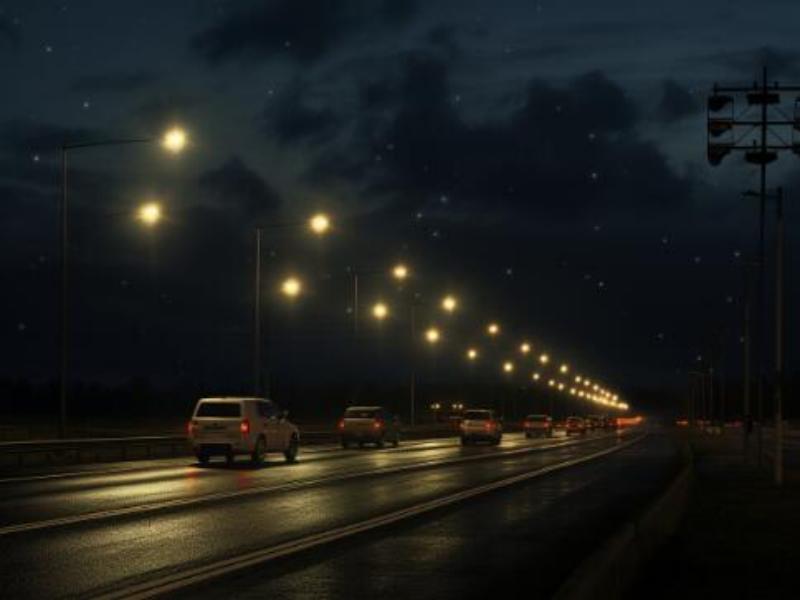Highway lights play a vital role in ensuring the safety and visibility of drivers and pedestrians on the road. The lights are strategically placed along the highway to provide illumination at night and during adverse weather conditions. An important aspect of a highway light is its height as it directly affects its effectiveness in providing adequate lighting and ensuring the safety of everyone on the road.
When it comes to highway light height, there are several important factors to consider. The height of the lights is determined based on various considerations such as the speed limit of the road, the curvature of the road, and the surrounding environment. In addition, the height of the headlights also plays an important role in reducing driver glare and ensuring uniform illumination on the road.
The standard height of highway lights is usually determined based on guidelines and regulations set by traffic authorities. For example, in the United States, the Federal Highway Administration (FHWA) provides guidelines for the design and installation of highway lights, including their height specifications. According to the FHWA, the height of highway lights should be optimized to provide adequate illumination while minimizing the potential for glare and light pollution.
The height of highway lights is particularly important in areas with higher speed limits. In these locations, lights need to be placed at a sufficient height to provide a broad and even light distribution across the entire road. This helps ensure the driver has a clear view of the road ahead, reducing the risk of accidents and improving overall safety. Additionally, the height of the lights minimizes shadows cast by the vehicle, further improving driver visibility.
In areas with curvy or hilly roads, the height of the road light becomes even more important. The curvature of the road affects the visibility of the lights, so the height of the lights needs to be carefully considered to ensure they effectively illuminate the entire road. Likewise, in areas with variable weather conditions, the height of the lights needs to be optimized to provide adequate illumination during rain, fog, or snow.
In addition to visibility and safety considerations, the height of highway lights also minimizes light pollution and environmental impact. By placing lights at optimal heights, transportation authorities can reduce the amount of light projected upwards and avoid causing light pollution. This is particularly important in areas close to residential areas and natural habitats, where excessive light pollution can adversely affect wildlife and human health.
The height of highway lights is also a factor in reducing driver glare. Glare from overly bright or improperly positioned lights can seriously affect a driver’s ability to see the road ahead, which may lead to an accident. By determining the appropriate height of highway lights, traffic authorities can minimize glare and create a safer driving environment for everyone on the road.
In recent years, advances in lighting technology have also affected the height of highway lights. LED technology, in particular, provides more efficient and precise lighting solutions for highways. Not only are LED lights more energy efficient, but they also allow for better control of light distribution, allowing for more flexibility in determining the optimal height of highway lights.
In conclusion, the height of highway lights plays a vital role in ensuring road safety, visibility, and environmental impact. By carefully considering factors such as road speed, curvature, and surrounding environment, transportation authorities can determine the appropriate height of highway lights, ultimately contributing to safer, more sustainable road infrastructure. As technology continues to advance, highway light height will continue to be a key consideration in providing efficient and effective lighting solutions for highways.
Post time: Jan-11-2024

